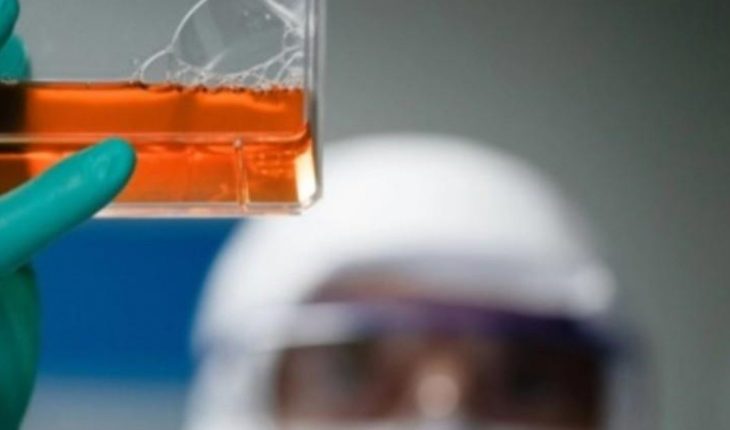Hyperimmune equine serum developed by Argentine researchers is an innovative immunotherapy based on polyclonal antibodies that applies to adult patients with moderate or severe coronavirus tables and which demonstrated reducing mortality by 45 percent, 24 percent need for intensive care internment and 36 percent mechanical respiratory care requirement. The so-called “CoviFab” was approved by the National Administration of Medicines, Food and Medical Technology (ANMAT) last December and is now available for hospital use and under prescription for clinics, social works, prepayments or ministries of health upon request.
More than 70 researchers worked on the project and was developed by eight private and public institutions, including the National University of San Martín, the Conicet and the Inmunova laboratory. Currently Brazil, Costa Rica and Mexico also have trials, but Argentina is in the most advanced state.
To obtain hyperimmune equine serum, a SARS-CoV-2 virus protein that serves as an antigen is injected into horses. When introduced into the body of these animals induces an immune response causing the formation of these antibodies that neutralize the virus’s ability to enter cells.
What does hyperimmunization mean?
It is an immune response similar to that produced by vaccination although generated with very high doses of the protein that functions as an antigen, which is inoculated many times in the equine to produce a large amount of antibodies. They are then biotechally processed to obtain very safe fragments that do not produce adverse effects and retain a very high neutralizing capacity.
To whom will the equine serum be applied?
Patients who do not develop their own immune response in time. In this way, the supply of antibodies exogenously will allow them to prevent viral proliferation and give them time to develop their own defenses. Pretension is to avoid widespread respiratory inflammation caused by coronavirus.
What does it mean that the serum is based on the generation of “polyclonal” antibodies?
The term “polyclonal” refers to the response of an immunocompetent organism, which, faced with a particular antigen, activates many clones capable of responding to it. Meanwhile, “monoclonal” antibodies come from a single clone. This was explained by Fernando Goldbaum, director of the Center for Redesign and Protein Engineering of the National University of San Martín (CRIP-Unsam) and founding partner of the biotech company Inmunova.
“We use polyclonal antibodies because, by recognizing the antigen in different ways, it generates greater potency, greater neutralizing capacity and less chance that mutants will not be neutralized,” the specialist said
Telam.
Why is this drug more effective than human plasma?
Unlike human plasma, hyperimmune equine serum is much more potent and is produced on a large scale. Both serum and plasma are two different forms of passive immunization. This means that antibodies are produced in another organism and then transfused, unlike the vaccine with which the vaccinated person generates their own antibodies.
This noon I toured the @inmunova facilities on the campus of the @unsamoficial, where the hyperimmune anti-Covid-19.Se serum was developed is about a huge achievement of Argentine science, which also demonstrates the importance of public-private articulation. pic.twitter.com/TVuTQdDiyX — Alberto Fernández (@alferdez)
January 11, 2021
Why horse-based intervention?
Horses have a blood volume of six to seven times that of humans (an adult has between 5 and 6 liters, instead an equine between 35 and 40, for example). On the other hand, horses are hyperimmune, so they are given a very large amount of antigen that allows them to produce a significant amount of antibodies, with a potency between 20 and 100 times greater than those produced by patients during a natural infection.
How was your safety assessed?
The clinical study on which its authorization was based assessed the safety and efficacy of the medicinal product in 242 adult patients (18 to 79 years) hospitalized with moderate to severe disease (confirmed by PCR), within 10 days of initiating symptoms. Half of them were provided with the hyperimmune serum INM005 and the other half a placebo. The trials were conducted in 19 hospitals and clinics in the Buenos Aires, Neuquén and Tucumán Metropolitan Area, and the average age was 54 years, with a couple65% male and 35% female.
Which body approved the use of hyperimmune serum?
Its use was approved last December by the National Administration of Medicines, Food and Medical Technology (Anmat).
What did the drug show, according to that organism?
Reduce mortality by 45%; 24 per cent of critical care in detention; 36 per cent of mechanical respiratory assistance; clinical improvement (WHO evaluation scale) at 7, 14 and 21 days.
Who was not hit by clinical trials?
No studies were conducted in pregnant women, therefore it is not known whether “CoviFab” can cause foetal damage and so it is recommended not to use during pregnancy. There were also no trials in the paediatric population.
Is the development of the drug based on a new medical technology?
No. The technology applied by this research group is similar to that used for 30 years in other treatments for poisonings from trades or scorpions, poisonings and exposure to various viruses such as rabies and other infectious diseases such as avian influenza.
What other agencies of the national state participated in the impulse of this serum?
It received funding from the Ministry of Productive Development through a fondep credit under the National Productive System Assistance Program, which supported the generation of inputs, equipment and solutions to mitigate the effects of the pandemic by SMEs, industries, entrepreneurs, universities and scientific-technological institutions. In turn, in its development contributed the private public articulation headed by the Immunova laboratory and the Argentine Biological Institute (BIOL), with the collaboration of the Leloir Institute Foundation (FIL), mAbxience, Conicet, the National University of San Martín (Unsam) and the Malbrán.Fuente: Télam





